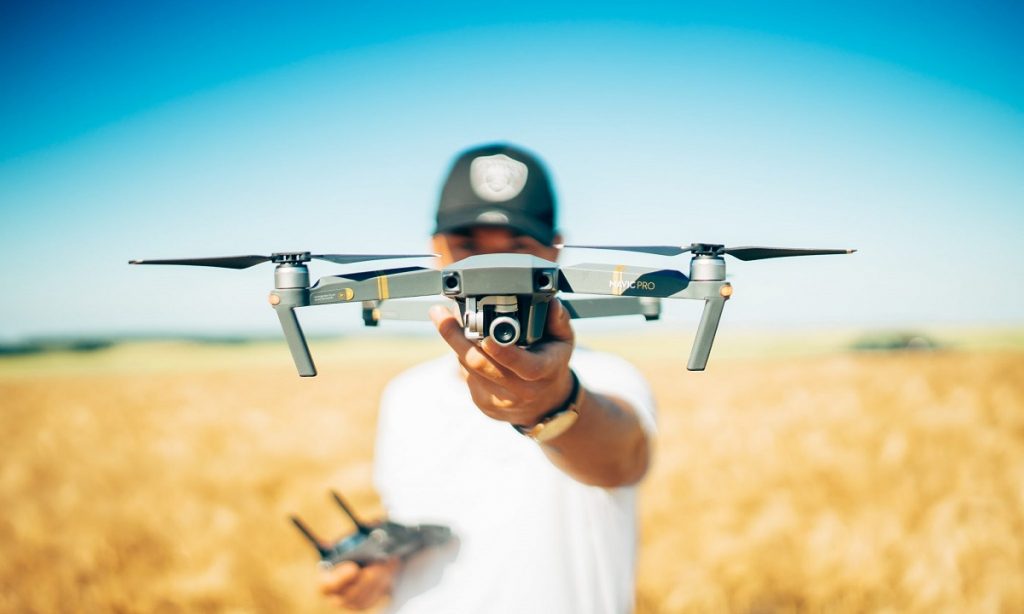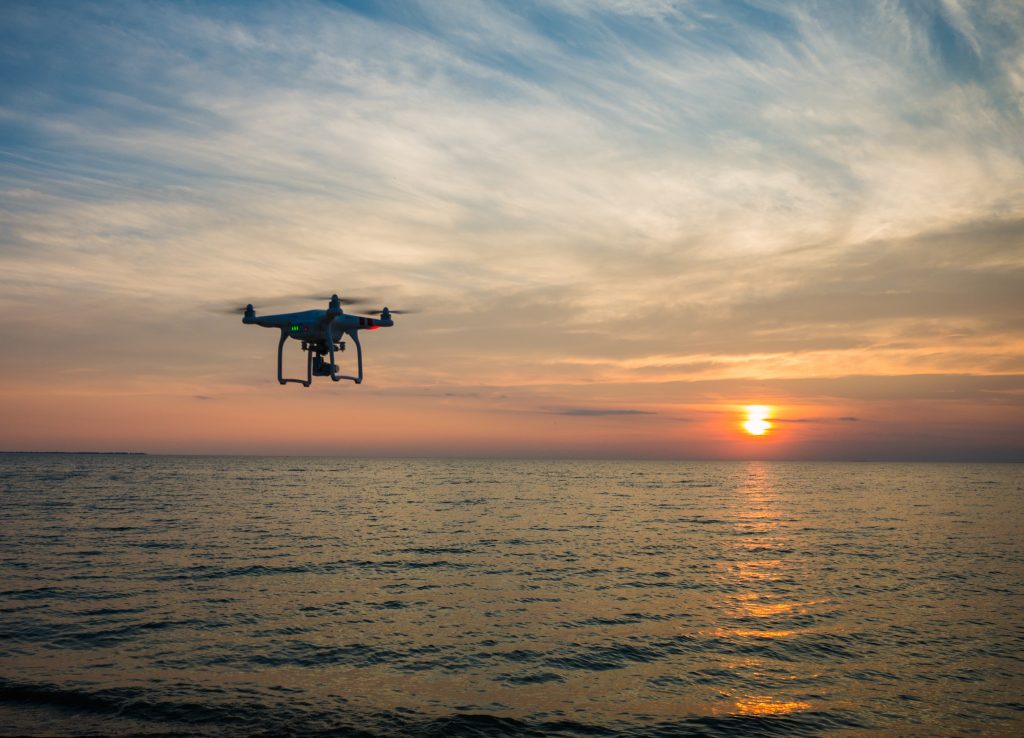
Drones in Agriculture: A booming sector?
About the industry
The use of drones in agriculture enters to a more mature phase and no longer considers to be a radical novelty. Early adopters are paving the way to provide research evidence and operational best practices.
In short, farmers can optimize spraying of pesticides in areas that need treatment, and significantly reduce the amount used, reduce water use, control crops quality and access areas that are difficult to reach with traditional farming tools. For instance, agriculture drones can spray 40-60% faster than manual spraying with saving 30-50% in chemicals. In addition, drones are also able to conserve up to 90% of water usage for agriculture.
The agriculture drone market is expected to grow at a CAGR of 31.1% from 2019 to 2025 to reach $5.19 billion by 2025.
The growth in this market is mainly attributed to the factors such as growing population and rising pressure on the global food supply, increase in venture funding for development of agriculture drones, growing e-agriculture or information and communication technologies (ICTs) in agriculture, rising automation in agriculture, growing emphasis on enhancing agriculture efficiency, and rising need for water conservation across the globe.
However, technical limitations of drones are likely to hinder the market growth to some extent.

Main benefits:
Multiple factors hinder the mass-adoption of drones although their benefits are straightforward. Drones require less labor to execute occasional or intermediate spraying and monitoring. In some cases, drone-spraying uses less water almost 90% to distribute the chemical or biological components to the crop. There is no soil compaction damage, to carry the heavy machinery or workforce on the crop. The spraying can be done even if the field is muddy and not approachable by other means.
Use cases:
Drones are used for soil and field analysis, crop monitoring, irrigation, crop spraying, crop field mapping, crop health assessment, and livestock monitoring all by using remote sensing.
Precision Farming
Precision farming involves the use of innovative technologies and tools for agriculture. It involves the analysis of the data acquired from fields, followed by applying appropriate inputs to increase crop productivity. Precision farming helps manage variations in the field to grow more crops using fewer resources and reducing production costs. Precision farming optimizes farmland efficiency and the agricultural practices that are already in use. Different types of cameras such as multi/hyper-spectral, infrared (IR), thermal, LIDAR, and high-resolution cameras are mounted as payload on the drones, which help monitor the yield.
Livestock Monitoring
Livestock farmers can use drones to monitor the area where livestock is kept. With the help of thermal imaging and high-definition cameras, drones can help farmers to remotely keep an eye on their livestock. The safety of the livestock, and its movements and health condition can be accessed through the advanced imaging and analytics. The major sub-applications of livestock monitoring mainly include feeding management, heat stress management, animal comfort management, and behavior monitoring and control.
Precision Fish Farming
Fish farming is a form of aquaculture that involves raising fish commercially in tanks or enclosures. It is done to increase fish farm productivity to meet the increasing demand for food. Fish farming has become a common practice to increase the income of practitioners and, in the process, reduce the wage expenses on fish imports. The major applications covered under fish farming include fish tracking and fleet navigation, feeding management, and water quality management.
Smart Greenhouse
Greenhouse provides a controlled environment for plant production with sufficient sunlight, temperature, and humidity. The greenhouses are built to provide an optimal indoor growing environment that suits the plants’ requirements; hence, they need exposure to maximum light and ventilation. Drones can monitor greenhouse environmental factors such as temperature, humidity, carbon dioxide, luminosity, and volatile organic compounds, apart from plant growth and stress.
Forestry & Bird Control
A niche use case could be in the forestry, as drones are efficient in planting trees especially at remote areas. It drops a bullet with the seed to the ground at a precise location. Also, drones shaped like birds, like predator birds can keep away spices that inflict damage on the crops otherwise.

Main challenges:
The previous use cases might make seemingly obvious economic and environmental sense, but success is far from granted.
Legal & Regulation
In the EU, the new EUSA regulations covers an EU-wide regulatory approach to the UAV/ drone industry. To enable a drone to intervene besides just monitoring, such as spraying the use case gets complex. Since the drone requires to lift weights, powerful rotors are needed, which falls into a heavy machinery category (more than 25kg) which needs a 2nd level legal approval to execute the intervention. Furthermore, the drone is equipped with a highly concentrated chemical solution, which is a toxic, hazardous material, therefore an even stringent control is required.
Even if drones are pretty autonomous, think about the robot pilots, it requires human supervision, with a highly qualified and certified personnel. The drone controller, must attend theoretical and practical course work and perform an exam to obtain the permit & license.
For spraying you need a certified biologist to observe and approve the intervention. The biologist is also responsible to ensure that the right component was diffused at the right place and at the right quality.
Batteries
Heavy drones can spend up to 40 minutes in the air without carrying the payload. If equipped with 20kg of spraying components and 5kg of sensors the flight time shrinks drastically to around 15 minutes. Otherwise we need drones with more rotors with a 1 rotor (helicopter), 3 rotors (tricopter), 4 rotors (quadcopter), 6 rotors (hexacopter), and 8 rotors (octocopter), along with more unusual setups such as 12 and 16 rotors. Unfortunately, the scaling of rotors does not correlate with flight-time increase.
Although a lot can be done with a drone in such a short time frame, and a quick pit-stop to change the batteries might not be a head-ache but we can easily imagine longer flight times. Experiments are ongoing for a better battery technology using components other than Lithium or even nanotechnology.
Weather conditions
Drones can be safely operated in a nice, calm and sunny weather. With little airflow, let alone a wind, the precision of executing mission is at risk. Even if some drones manage to balance off mild drifts, the risk of precision spraying is still prevailing.
Technology Gap
Highly sophisticated software to operate and execute a drone mission, might often meet with simple user requirements. In order to fully take advantage of the technology, “farmer centric innovation” is necessary, otherwise a highly-qualified, highly-skilled workforce is needed to cover the agricultural operations.
Altogether, drones in agriculture is a fascinating technological progress, but the true potential is yet to be unlocked in the coming years.
By MAXELLCO